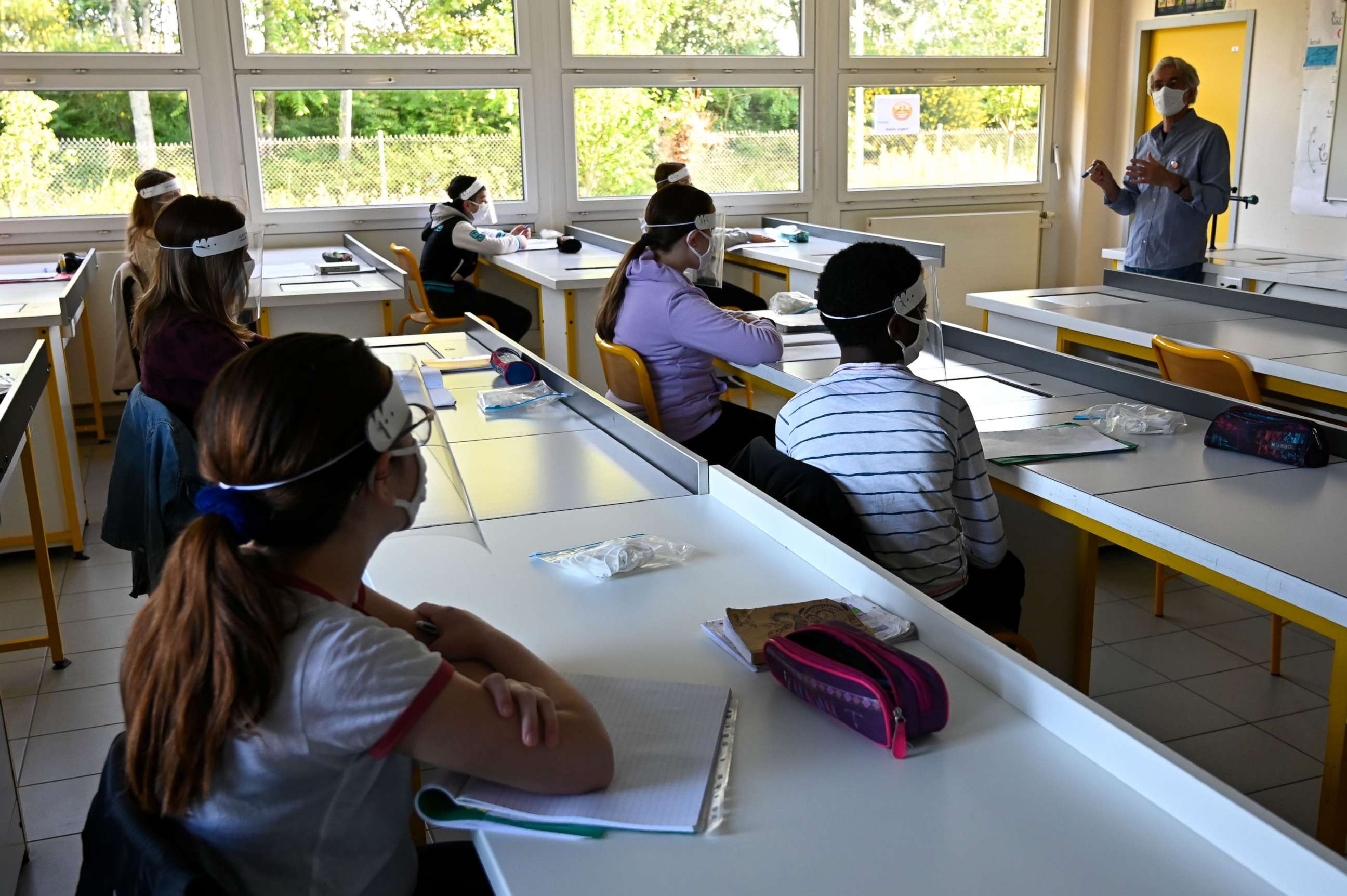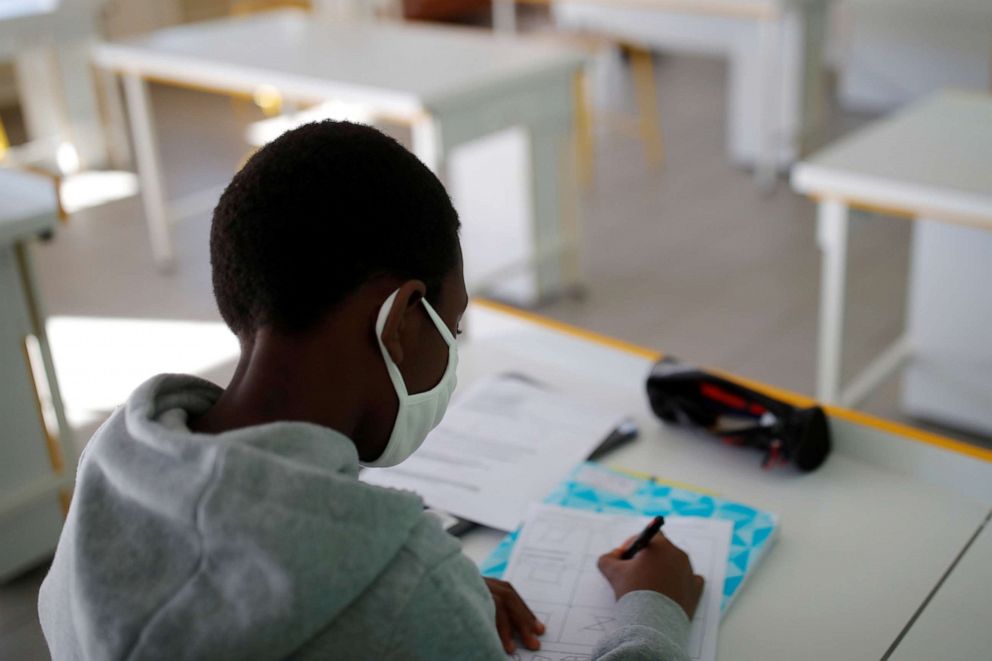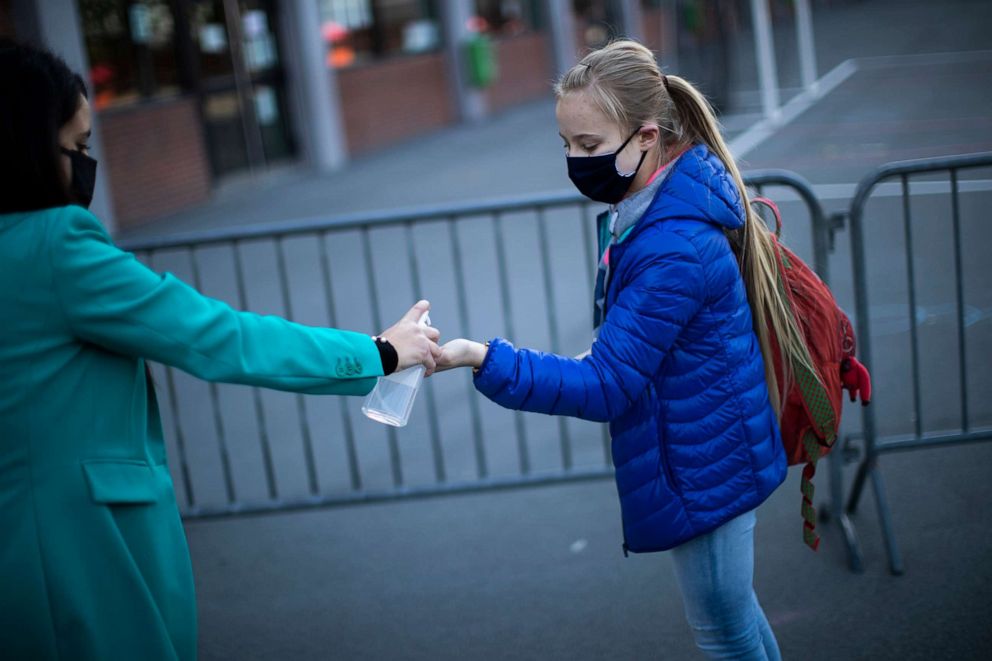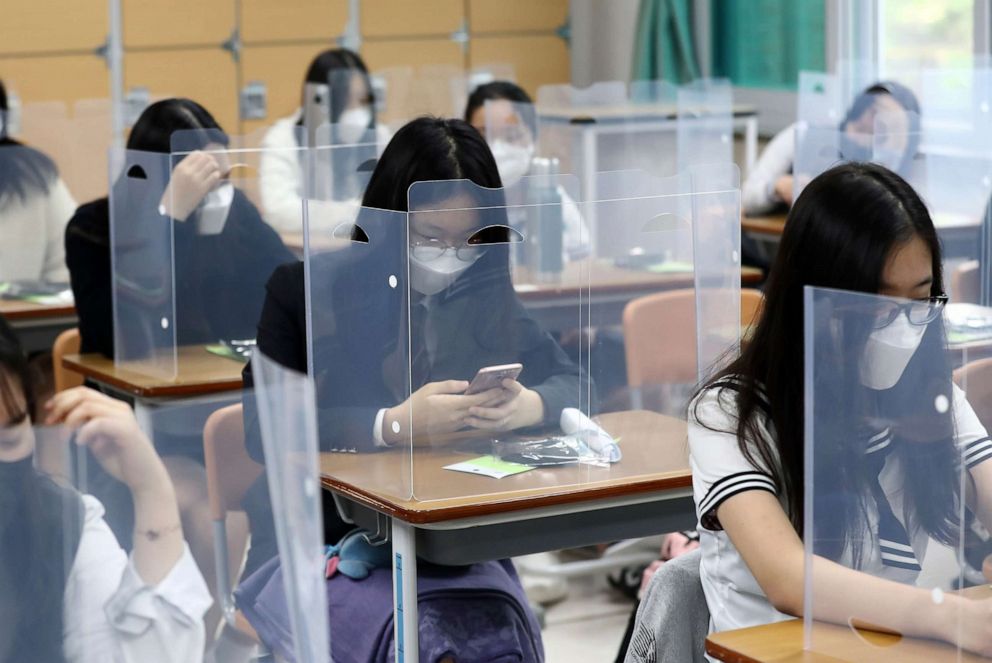It's too soon to declare kids 'less capable' of transmitting COVID-19: Experts
It is clear, however, that the virus affects children differently than adults.
When will it be safe for children to return to the classroom?
That is the question being debated from the Oval Office to the dining room table, and the implications of doing so successfully will mark a significant turning point as societies look to emerge from the ongoing coronavirus pandemic.
Over the weekend, a senior public health official declared that emerging case studies of various open schools abroad suggest children seem “less capable of spreading” the virus -- a welcome sign for parents eager to regain some sense of normalcy.
“What we have seen in countries where schools have remained open is that there have not been big outbreaks in schools,” Soumya Swaminathan, the World Health Organization’s chief scientist, told the BBC on Sunday. “And where there have been it has been associated with events where a lot of people gather, not in regular classrooms. And it has often been associated with an adult who has had the infection and who spread it."
But experts caution that while the emerging data is reassuring, it is simply too early to make any conclusive statements on whether or not children are less able to spread the virus relative to adults. The schools referenced by Swaminathan have all instituted social distancing and enhanced hygiene protocols that make virus spreading less likely.
A dearth of information about how the disease manifests in children makes reopening schools a potentially risky endeavor. Children may be just as likely to bring home the virus and should be taught to follow the same preventive measures to prevent the spread to others -- a particularly challenging feat since younger children are typically not as conscious of proper hygiene habits.
“It’s hard to make a definitive answer at this moment about children’s’ role in the transmission dynamic,” said Dr. John Brownstein, an epidemiologist at Boston Children’s Hospital and an ABC News contributor.

Experts agree that the virus affects children differently than it does adults. When children contract the virus, for example, they often show mild symptoms or no symptoms at all.
“The data suggests right now that children don’t get as sick as adults do,” Dr. Yvonne Maldonado, a professor of pediatrics and infectious disease at Stanford University, told ABC News. “We aren’t seeing a lot of hospitalizations [with children], and the ones we are seeing seem to be distinct from what the adults are experiencing.”
In response to an inquiry about Swaminathan’s comments, the Center for Disease Control issued a brief statement to ABC News.
"Children can be infected with the virus that causes COVID-19 the same way as adults, and they can infect others if they have it,” the statement reads. “Like adults, children may be infected but not have symptoms, and there is increasing evidence that people without symptoms may also spread the disease."

So where does that leave us on the question of transmissibility?
While children may be at lower risk of feeling symptoms of the disease, they still play a key role in mitigating its spread. As Brownstein said, “every kid is a bridge to a vulnerable person,” and traditionally, with respiratory viruses, children’s behavior lends itself to disease proliferation.
“Generally, children are important vectors in respiratory virus epidemics because of congregation, hygiene,” Brownstein said. “They’re in schools.”
But experts also note that this disease behaves far less predictably than past respiratory ailments, so relying on previously accepted principles could mislead public health officials.
“This virus keeps doing very funny things, very strange things,” Maldonado said.
For the most part, children appear to develop a milder disease from COVID-19, but there are emerging reports of a very small subset of children who will develop multi-system inflammatory syndrome associated with COVID-19, for whom CDC has just released a formal case definition. Although very rare, children who have been reported to develop this syndrome are in a critical life-threatening situation, and experts do not yet know who is at most risk for this rare illness.

In Europe, at least, some recent developments appear to conflict with Swaminathan’s position that children appear “less capable” of spreading the disease.
French authorities announced on Monday that 70 new COVID-19 cases linked to schools arose just one week after some classrooms reopened. And last month, a German study (which has not been peer reviewed) found that “children may be as infectious as adults.”
Dr. Adam Lauring, an infectious disease specialist at the University of Michigan, cautioned that the German study is preliminary and pointed out that the report did not sample enough kids relative to adults.
“Now there [are] various ways they still need to analyze the data with more studies, but on first pass, some people will shed more virus than others,” Lauring said. “But at least in this study, [it] didn't seem like there was a difference based on age.”

But some doctors have differing working theories.
“If the assumption is made that symptoms and virus loads go together,” Maldonado said, “then people who are asymptomatic may have less virus and therefore may be less likely to transmit the virus.”
Dr. Megan Freeman, a pediatric infectious disease specialist at UPMC Children’s Hospital of Pittsburgh, translated Maldonado’s assumption into practical terms.
“The majority of children don't have a lot of symptoms, and the way that we are spreading the virus is through coughing droplets that are filled with virus onto other people,” Freeman said. “So if the kid is less likely to have a cough, then they're not going to be spreading as many droplets to others.”
That doesn’t mean, however, that children are exempt from following the same precautionary measures as adults, experts said, at least until the evidence suggests otherwise. On Wednesday, Dr. Maria Van Kerkhove, a World Health Organization epidemiologist, reinforced that message.
“From some of the studies that we know from the household transmission studies, children seem to be infected from their parents, from adults that are living in that household,” Van Kerkhove said. “It doesn't mean it cannot happen the other way around.”
What to know about coronavirus:
- How it started and how to protect yourself: coronavirus explained
- What to do if you have symptoms: coronavirus symptoms
- Tracking the spread in the US and Worldwide: coronavirus map
Tune into ABC at 1 p.m. ET and ABC News Live at 4 p.m. ET every weekday for special coverage of the novel coronavirus with the full ABC News team, including the latest news, context and analysis.




